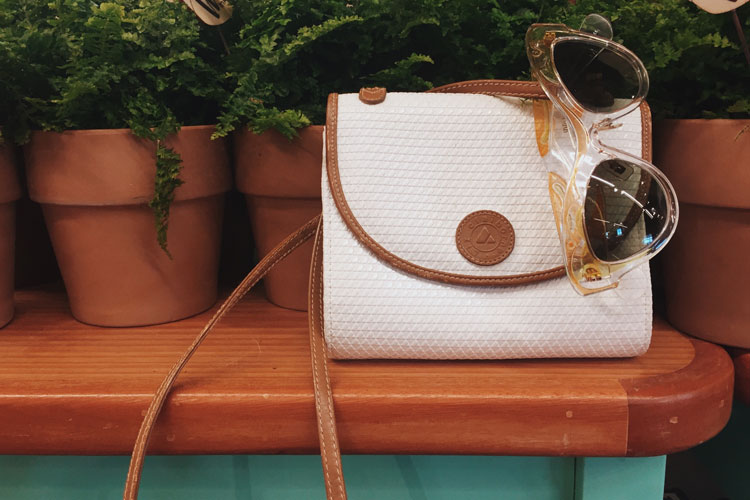
Promoting sustainable fashion will aid in creating a greener planet. photo by Gracey Jarecke, creative vision by Mia Harsh
As environmental awareness becomes more essential in our ever-changing world, consumers should examine a commonly overlooked area: their closets.
The fashion industry is notorious for its lack of responsibility when it comes to the environment. Trends are constantly shifting, and people are always craving the newest thing, despite the negative consequences. Until the global industry makes changes, hopefully in the near future, it is up to the individual consumer to decide which purchases can benefit the Earth and which will be harmful. Everyone has an obligation to the planet, and maintaining a healthy one should be a priority. This begins with being educated on an industry that equally affects everyone. Knowing the right fabrics and brands to buy (and which ones to avoid) can make a massive difference in protecting our planet.
Doing research is vital to know exactly what consumers are acquiring. When it comes to clothing specifically, start with fabrics. Are they biodegradable? How long do they last? How much water and time did they take to cultivate? What kind of process was used? Understanding fabrics is an extremely important step to knowing more about the garment consumers are buying. The fabric reveals the life of the garment. Although each fabric has its own characteristics with pros and cons, natural fibers should generally be favored over synthetic. Fabrics constructed of plants and proteins tend to last longer and are almost always biodegradable. Bamboo, for example, is an ideal fiber that creates high quality, lasting fabrics. It grows quickly, does not need too much water or space, and is biodegradable.
On the other hand, man-made fabrics and fibers contain plastics and chemicals that are not only poisonous to our environment, but will also deteriorate quickly if not properly taken care of. While it may seem like a given, following washing, drying, and ironing instructions will immensely lengthen the life of the garment, regardless of the fiber, and make an extensive impact on the amount of new clothes being bought by consumers.
As crucial as fabric is, it is just as necessary to examine brands in their processes. Companies should be transparent with their work and their sources. If the brand does not give basic background information, from where their fabrics are produced to manufacturing methods, be aware that their practices may be questionable. Fast fashion brands (brands that produce mass products in a very short time, for example, Forever 21, H&M, and FashionNova) should be avoided altogether. Most of these brands do not give any information on their habits, because they are not sustainable, nor are they ethical.
Determining acceptable brands is dependent on more than just ecological factors. Clothing labels should not only be environmentally friendly, they should be morally sound as well. Many companies give honest data regarding what they are paying workers and in what conditions their employees are working. The quality of brands is not limited to the quality of the clothes they produce, but relies on external factors that many buyers do not take into account. As dependable customers, it is our duty to take these elements into consideration to make educated purchases.
It boils down to this: learn to be a smart shopper. Reduce, reuse, and recycle. While shopping, make sure there is a reason behind the purchase. What exactly are you looking to buy, and how necessary is it? Shopping with a purpose is the easiest way to reduce purchases, and in turn, have a low impact on the environment. Take care of the clothes you already have. Wash according to instructions and the life of the garment will increase tremendously. Reuse and repurpose old pieces that have gone out of style. It’s as easy as cutting jeans into a pair of shorts! Donate old clothes to thrift stores and purchase from thrift stores to recycle fashion and keep negative repercussions to a minimum while still picking up the latest trends. Being eco-friendly doesn’t necessarily mean sacrificing style!
The Earth is our home, and it is essential to care for it in all aspects of life. It is possible to be fashionable and sustainable, with the correct research and decisions. Be a smart consumer and a considerate human by protecting the environment, beginning with simply focusing on the clothes you wear.